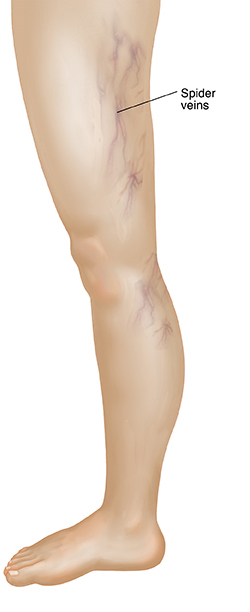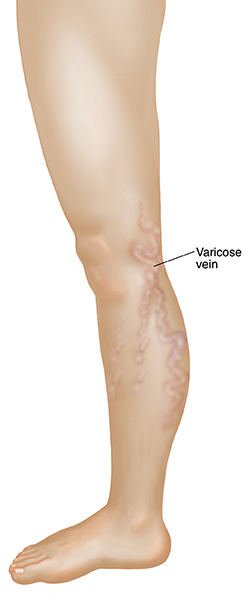Varicose veins are enlarged veins that twist and bulge. You can see these cord-like veins just under the skin. Spider veins, are damaged blood vessels just under the skin that look red, blue or purple.
What are the symptoms?
Many people don't have any problems with spider veins or varicose veins. But sometimes they can cause legs to ache or swell. Your legs may also feel heavy and tired. Or they may feel like they’re burning. These symptoms may be more severe at the end of the day. Prolonged sitting or standing can also make your symptoms worse. But there are treatments that can help.
Who gets spider and varicose veins?
Anyone can get spider or varicose veins. But vein problems tend to be hereditary (run in families). Other factors that can affect veins include:
-
Pregnancy, hormones, and birth control pills
-
A job where you stand or sit a lot
-
Extra weight or lack of exercise
-
Age
Do you often hide your legs because of the way they look? You may have noticed tiny red or blue bursts (spider veins). Or maybe you have veins that bulge or look twisted (varicose veins). If so, there are treatments that can help.
What can be done?
Spider and varicose veins can affect the way you feel about yourself. Talk to your healthcare provider about your concerns. There are treatments that can ease symptoms and make your legs look better.
Your treatment choices
Treatment may include:
-
Self-care. Being physically active can help improve blood flow in your legs. So, too, can losing weight, if needed, and wearing compression stockings.
-
Sclerotherapy. During this treatment, a chemical is injected into the veins. It can work for spider veins and some varicose veins.
-
Newer minimally invasive procedures or surgery (in rare cases). These treatments may be needed for large varicose veins.




